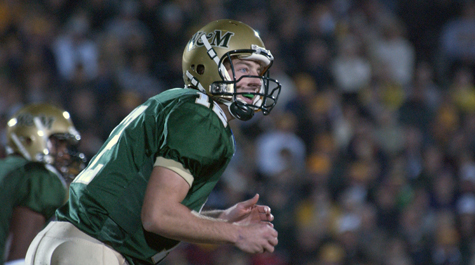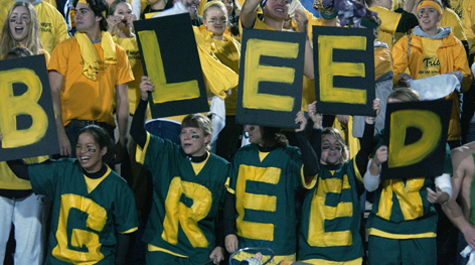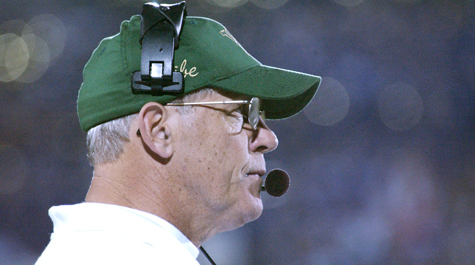The 2004 Tribe football team: great season, greater impact
This year is the 10th anniversary of one of William & Mary’s greatest football teams, the memorable 2004 team, arguably coach Jimmye Laycock’s finest. It reached the NCAA Division 1-AA semifinals, rolled up an 11-3 record (7-1 in the Atlantic 10, our conference at the time) and amassed a school-record 486 points. But the impact of the 2004 team goes beyond the record books, and the team will be honored Saturday during the game against Delaware.
Lang Campbell ‘05, a former walk-on, was the catalyst of the attack, as he put together the greatest single-season in school history at quarterback. At the end of the year, he was recognized as the nation’s top player and received the Walter Payton Award (the Football Championship Series equivalent of the Heisman Trophy).
The season featured miracle come-from-behind victories, remarkable offensive shows and several notable defensive efforts.
While it is never easy to compare teams from different eras, or even decades, the 2004 squad certainly ranks among the best ever at W&M and can be mentioned in the same sentence with such transcendent squads like the 1942, 1948 and 2009 outfits.
But the interest and excitement the 2004 team produced had a long-lasting impact on the program that is clearly visible to this day. New facilities, renewed interest and greater visibility in the area have resulted.
“As the season progressed, we (the players and coaching staff) could feel a heightened excitement from our fellow students, alumni, the media and throughout Williamsburg and the Peninsula, a feeling of one with the team and our program,” Campbell reflected. “Everyone sensed it.”
The aftermath
Bobby Dwyer, senior associate athletic director at W&M and director of the Tribe Club since 1985, pinpoints that season as the launching of a new level of interest in and development of William & Mary football.
“The 2004 season and the remarkable interest it produced impacted our Tribe Club support,” he said. “It enabled us to secure gifts, led by Doug Morton and Marilyn Brown, Ed Horton and Gary LeClair to install permanent lights at Zable Stadium and the football practice facility.”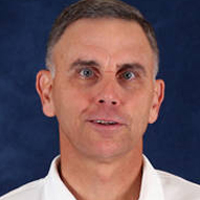
It also, Dwyer continued, “generated a successful effort to install a modern scoreboard at Zable Stadium with support from Nancy and Hal Mathews, the William and Mary Alumni Association and the Class of 1957.”
This was followed by university administration providing funds for the installation of a state-of-the-art artificial turf field. The turf has enhanced the stadium’s usage tremendously, allowing usage in all weather conditions and easy, economical maintenance.
Dwyer emphasizes “the 2004 season had an enormous impact on our ability to raise funds for the Laycock Center, which has become a centerpiece for the program and one of the nation’s best facilities of its kind.”
In true William & Mary style, Dwyer said, “the 2004 team is perhaps the only team in college football ever to win 11 games and compile a 100 percent graduation rate. The College, the athletic department and Coach Laycock take as much pride in that as in the outstanding football record.”
On and off the field, the season will be remembered for remarkable victories, memorable plays and the passionate response of the student body, alumni and fans.
Amazing student support
Before the final game, a 48-34 semifinal playoff loss to James Madison at Zable Stadium – where ESPN installed temporary lights for the evening telecast – more than 1,000 students lined up to get tickets the day before the game and camped out all night.
Laycock drove to the stadium “to see for myself that this was true … I got over there and just couldn’t believe what I saw. The excitement and spirit among the waiting students was just electric.”
The fact that the 2004 team turned out to be one of the school’s best ever is startling. The previous season the team had a 5-5 record and finished well down in the A-10 standings. Prior to the season, none of the prognosticators picked the Tribe to go anywhere.
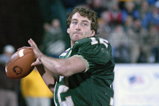 “We knew going in we were loaded with some very good players and had the capability to be exceptional,” Campbell said. “We had a very good spring practice and many of us stayed around to work out together during the late spring and summer months. I personally worked with most of my receivers, including Dominique Thompson, a guy with tremendous speed and athleticism. He and I spent many days working together to the point we could read each others minds.” (Thompson finished the season with 79 catches for 1,585 yards -- both school records -- and 13 touchdowns. He averaged more than 113 yards per game.)
“We knew going in we were loaded with some very good players and had the capability to be exceptional,” Campbell said. “We had a very good spring practice and many of us stayed around to work out together during the late spring and summer months. I personally worked with most of my receivers, including Dominique Thompson, a guy with tremendous speed and athleticism. He and I spent many days working together to the point we could read each others minds.” (Thompson finished the season with 79 catches for 1,585 yards -- both school records -- and 13 touchdowns. He averaged more than 113 yards per game.)
The more they worked together, Campbell said, the more comfortable everyone became, the better chemistry developed with the offensive linemen. Even some of the younger players blossomed.
“Honestly,” Campbell said, “we felt very confident going into the season. I knew my game had significantly improved with the extra work and the coaches put in some new offensive wrinkles that paid off in the season and best utilized our personnel.
“And,” he added, “the support of the student body, our 12th man, grew all season.”
Campbell remembered that a professor who had been at W&M for many years addressed him in class one day. He had just attended his first Tribe game ever – and wanted to publicly congratulate him on the victory he had witnessed.
“That floored me,” Campbell said. “It was unreal around campus and in Williamsburg, something we’d never seen.”
Three games stand out
*W&M 9, New Hampshire 7. The game in Durham, N.H. was just the third of the season, against the 10th-ranked team in the country, and played in a driving rain and windstorm that never let up. Three remarkable field goals by kicker Greg Kuehn, all booted in a swirling wind and rain, proved the difference as the defense completely stopped UNH’s high-powered offense.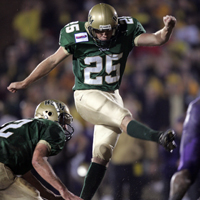
*W&M 27, JMU 24. This was the game that proved W&M was one of the nation’s elite. A bruising back-and-forth battle in front of a partisan Dukes crowd remains one of the signature wins in Tribe history. Campbell led a final, minute-long drive, completing six passes in a row, to set up a game-winning 43-yard field goal by Kuehn. Campbell remembered that, “the wind in Kuehn’s face suddenly died down. We quickly ran the play while it was calm … It was a remarkable kick.”
*W&M 44, Delaware 38. The Tribe won this second-round home playoff game in two overtimes, just one reason it may be the most incredible victory in Laycock’s 35 years at W&M. The team had lost the regular-season game at then second-ranked Delaware and trailed, 21-0, after three quarters of the playoff encounter. No team ever seemed more out of a game.
But Tribe defensive back Stephen Cason intercepted a pass on the first play of the fourth quarter and sprinted 52 yards for a touchdown. From that point on, the Tribe defense, led by eventual All-America defensive end Adam O’Connor, completely shut down Delaware. The offense, led by a suddenly red-hot Campbell, the running of halfback Jon Smith and the receiving of Thompson and redshirt freshman Joe Nicholas, scored two late touchdowns to tie the game.
In the second overtime, William & Mary scored a touchdown on Smith’s burst up the middle. But the delirious crowd was stunned when Kuehn missed his first extra point in two years, breaking a consecutive streak of 99 in a row. Now UD would win with a touchdown and extra point. But the Tribe defense held when a final Blue Hens pass fell incomplete in the end zone, prompting a large segment of the student body to charge the field in one of the most remarkable scenes ever at Zable Stadium
“The second I saw this horde of students flooding the field all I could think about was four years earlier when we had few students in the stands and lots of empty space,” said defensive lineman Wade Harrell, a co-captain with Campbell that season. “It filled me with a pride and emotion I can still feel today.
“Coach Laycock had told us at halftime that the way we were playing Delaware might score one hundred on us and I believe right then and there we knew we were going to take it to them in the second half. People forget that Delaware was the defending national champion and had really been putting it to us for several years.”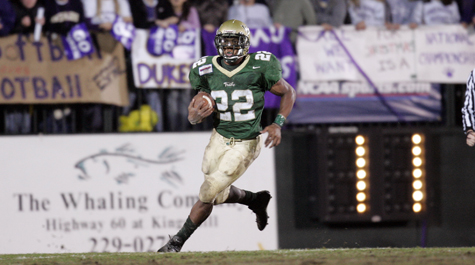
That Delaware game ended Harrell’s football career.
“I got blindsided on the play just before Cason’s interception and touchdown run and had my knee blown out,” he said. “That ended the season for me – and got my teammates riled up, too.”
Plenty of accolades
In addition to Campbell, Smith, Kuehn, Thompson, Cason and O’Connor -- all of whom made various A-10 all-conference teams -- offensive lineman Cody Morris, punter Mike Mesi and linebacker Chris Ndubueze were recognized. Campbell, who threw just one interception during the regular season, was the conference player of the year, Payton Award winner and first-team All-American along with Kuehn and Thompson. All three set numerous W&M records that still stand.
Campbell today works for Morgan Stanley in Washington, D.C., as a wealth management executive, specializing in advance planning and estate planning.
Harrell resides in Greenville, S.C., and is a physical therapist. He is married to Lindsey Brown Harrell ’04, and they are expecting their first child, a girl, later this fall.
Ten years have gone by since that memorable William & Mary team. They changed the shape of Tribe football in the years that have followed and have earned their place on a select listing of the College’s finest teams.















